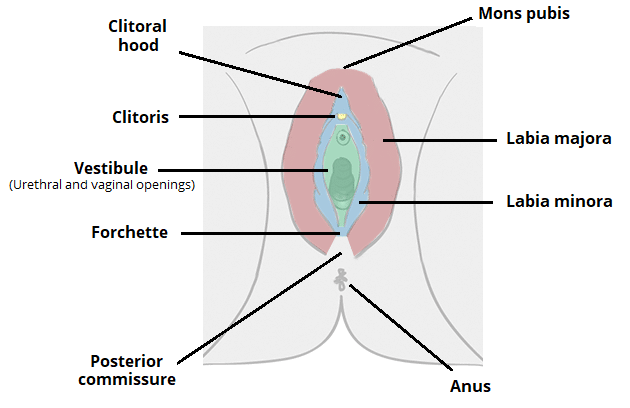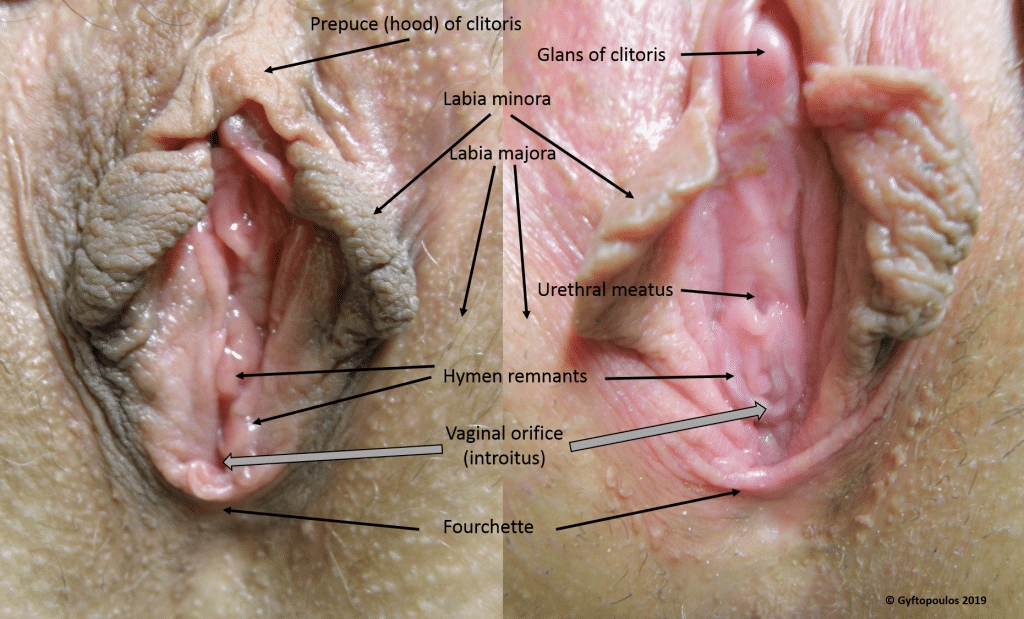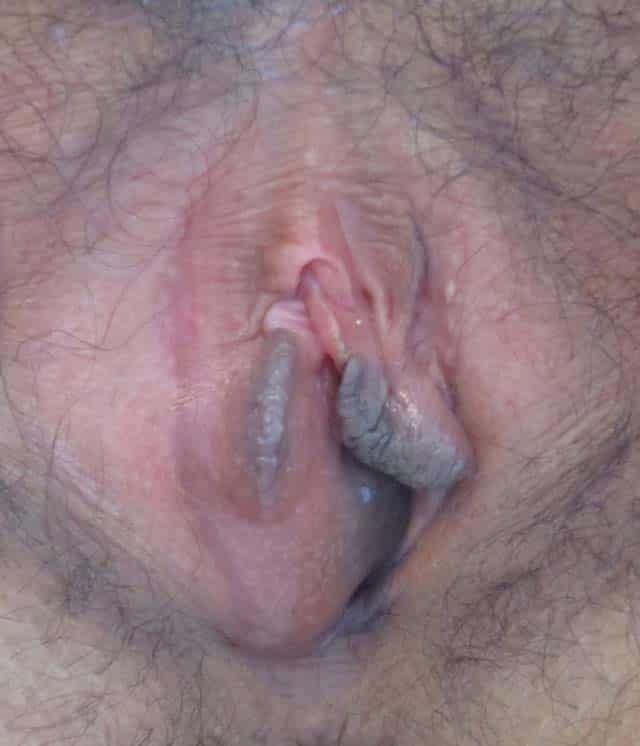The vulva (pudendum) refers to the external female genitalia. Its functions are threefold:
- Acts as sensory tissue during sexual intercourse
- Assists in micturition by directing the flow of urine
- Protects the internal female reproductive tract from infection.
In this article, we shall look at the anatomy of the vulva – its structure, blood supply and innervation.
Structures of the Vulva
The vulva is a collective term for several anatomical structures:
- Mons pubis – a subcutaneous fat pad located anterior to the pubic symphysis. It formed by the fusion of the labia majora.
- Labia majora – two hair-bearing external skin folds.
- They extend from the mons pubis posteriorly to the posterior commissure (a depression overlying the perineal body).
- Embryologically derived from labioscrotal swellings
- Labia minora – two hairless folds of skin, which lie within the labia majora.
- They fuse anteriorly to form the hood of the clitoris and extend posteriorly either side of the vaginal opening.
- They merge posteriorly, creating a fold of skin known as the fourchette.
- Embryologically derived from urethral folds
- Vestibule – the area enclosed by the labia minora. It contains the openings of the vagina (external vaginal orifice, vaginal introitus) and urethra.
- Bartholin’s glands – secrete lubricating mucus from small ducts during sexual arousal. They are located either side of the vaginal orifice.
- Clitoris – located under the clitoral hood. It is formed of erectile corpora cavernosa tissue, which becomes engorged with blood during sexual stimulation.
- Embryologically derived from the genital tubercle

Fig 1 – The major structures of the vulva (external female genitalia).
Clinical Relevance: Infection of Bartholin’s Glands
The Bartholin’s glands (also known as the greater vestibular glands) can become infected and inflamed – known as bartholinitis.
This is initially treated with antibiotics, but occasionally can be complicated by the formation of a cyst or abscess. In case of an infected cyst or abscess, the only effective treatment is surgical drainage or excision of the lesion.
Vascular Supply and Lymphatics
The arterial supply to the vulva is from the paired internal and external pudendal arteries (branches of the internal iliac artery and femoral artery, respectively).
Venous drainage is achieved via the pudendal veins, with smaller labial veins contributing as tributaries.
Lymph drains to the nearby superficial inguinal lymph nodes.
Innervation
The vulva receives sensory and parasympathetic nervous supply.
To describe the sensory distribution, the vulva can be divided into anterior and posterior sections:
- Anterior – ilioinguinal nerve, genital branch of the genitofemoral nerve
- Posterior – pudendal nerve, posterior cutaneous nerve of the thigh.
The clitoris and the vestibule also receive parasympathetic innervation from the cavernous nerves – derived from the uterovaginal plexus.
Clinical Relevance: Vulval Warts
Genital warts are benign growths of epithelium caused by certain HPV types, such as 6 & 11. They are highly infectious and are easily transmitted between sexual partners through sexual or even physical contact.
However they do NOT evolve into cancerous lesions. Other strains of HPV (most commonly high-risk types 16 & 18) may predispose affected individuals to dysplastic changes in the cervix, vagina and/or anus which can potentially lead to carcinoma.
Recently developed HPV vaccines are safe and efficient in preventing high-risk HPV infections.


